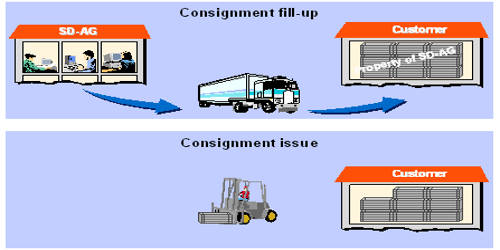Concept of Consignment of Goods
Consigned goods are products not owned by the party in physical possession of them. Maximization of profit is the main objective of each and every business. The party holding the goods (the consignee) has typically been authorized by the owner of the goods (the consignor) to sell the goods. For the fulfillment of this objective, the firm has to increase the sale of goods. For this purpose, the firm has to push its sales by all possible means. Consignment occurs when goods are sent by their owner (the consignor) to an agent (the consignee), who undertakes to sell the goods. The sales can be increased by opening different branches within the territory or abroad. Here merchandise is not owned by the consignee who has possession of the goods. Opening a branch is a costlier affair. Instead of it, the business house may appoint some agents in various areas. The consignor just gives the right to sell the consignment to the consignee and continues to own the goods until they are sold. The agent sells the goods on behalf of the sender of goods against the commission.
Common features of the consignment goods –
- The relation between both parties are of consignor and consignee not of buyer and seller,
- All expenses are received by consignor related to consignment and goods are sold at the risk of the consignor,
- The consignee is not responsible for any damage to products during transportation or any other way.
Once sold, the consignee retains a commission and forwards all remaining sale proceeds to the consignor. The person or firm who sends the goods is known as a consignor and who receives and sells the goods on behalf and the risk of the consignor is known as consignee. The goods so sent is known as a consignment. Thus, consignment is the dispatch of goods by the consignor to the consignee. This arrangement is commonly used by manufacturers that do not have direct access to distribution channels, and which prefer to retain ownership of their goods in order to avoid bad debt losses. The relationship created between the consignor and consignee is that of a principal and agent. This relationship is governed by the law of agency. In accounting, goods appear as inventory records of the consignor, not of the consignee. Retailers may also prefer this approach when they do not have sufficient working capital to buy goods from manufacturers. The agent acts on behalf of the principal. All the expenses for goods sending and selling are borne by the consignor. The consignor is entitled to profits and bears the losses on consignment. For Example- Clothes and shoes are given at consignment shops for resale.
The term consigned goods refer to a marketing arrangement whereby one party provides merchandise to a second party, who is responsible for selling the merchandise. Thus, consignment is neither a sale by the consignor nor a purchase by the consignee. In other words, the consignment of goods is not a sale. It is a mere transfer of goods from the principal to the agent.
















